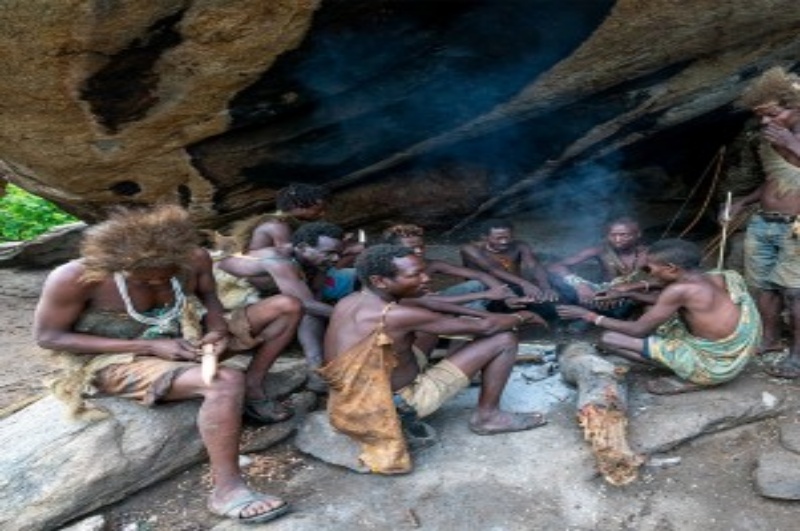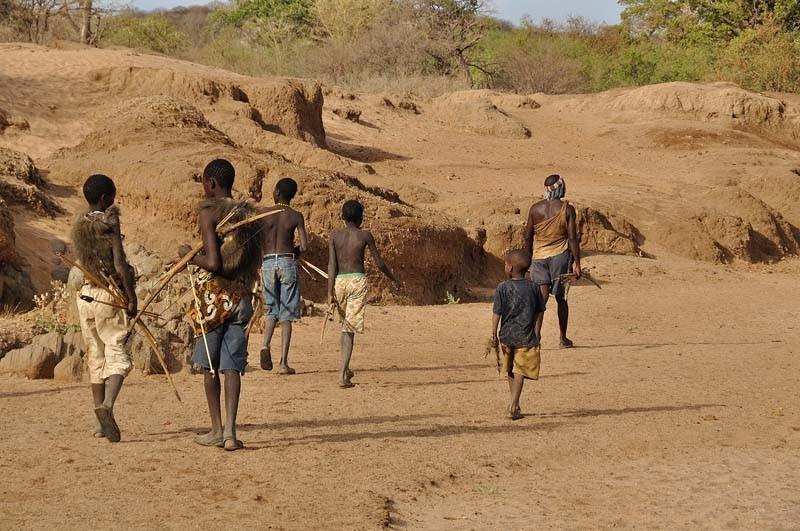- Hanzabe Tour
Details of Hadzabe tribe visit at Lake Eyasi
With an estimated population of fewer than 2,000 individuals, the Hadzabe are one of the last tribes to stay true to their tribal history. Existing far from the crowds and globalization that inevitably follow tourism, they exist much as they always have. The Hadzabe people live in caves near Lake Eyasi, and their isolation and shrinking numbers have allowed them to avoid the HIV epidemic and other diseases that have spread due to intertribal marriages.
Men typically hunt and bring home honey to feed their families, while women and children gather fruits, berries, and roots with which to supplement their diet.
The men are particularly adept hunters, and their daring and inventive hunting style is a sight to behold. Using parts harvested from other animals, they cunningly lure and put down game. They use locally made poisons and ingenious camouflage to hunt.
As this is their only source of food, they are the only tribe permitted to hunt in the Serengeti.
Whether overnighting in nearby lodges or travelling across from Karatu, visitors can join an early morning hunting demonstration before exploring the lake Eyasi region by car or on foot.
A distinctive feature of Hadzabe culture is their language. The Hadzabe language is an idiosyncratic tongue of clicks. It is similar to that of the famous Bushmen of the Kalahari Desert. Despite this and their similar physical appearances, DNA testing has shown no relations between the two groups.



